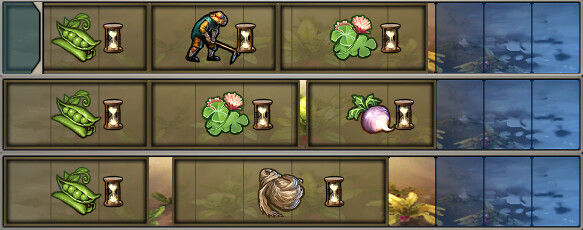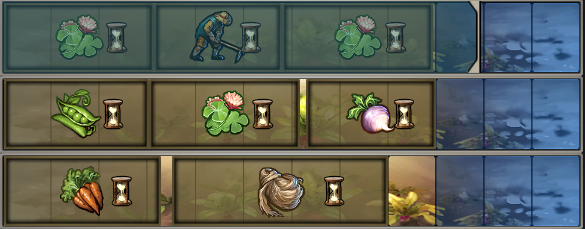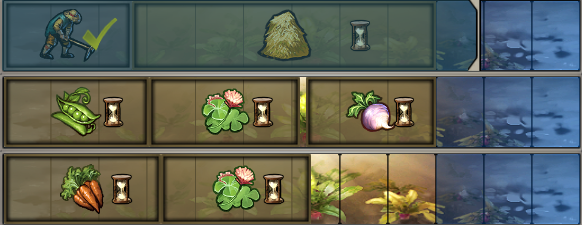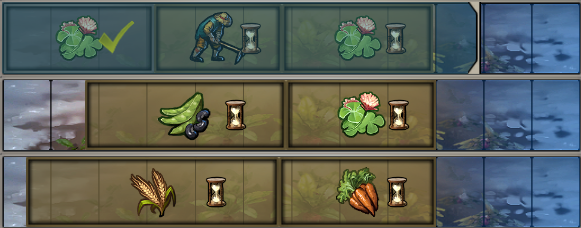With crop disease spreading being a thing in 1.0 (rather than something claimed that didn’t actually happened), I think it’s a good time to open discussion on what the most efficient field setups will be, particularly in Vanquisher difficulty.
To make a start, I’ll refer to the setups I was using when I wrote my game guide about a year and a half ago (can’t say if I will ever get to updating it through all the patches since).
First off, you want fields in groups of 3, covering an area of high Environment Fertility Factor (what determines the percentage of the percentage of Fertility gains). 12x6 can be a good rule of thumb, but utilising the space may require more (or less, in some cases). If you can’t spare the workers for that size fields, you can split the fields by pausing, plopping down 2 half size fields in the space you eventually want one, plan your fences/gates around everything, then delete the half size fields furthest from your settlement/path/Temporary Shelter. When you need to expand, use each field to expand to their respective space within the fencing.
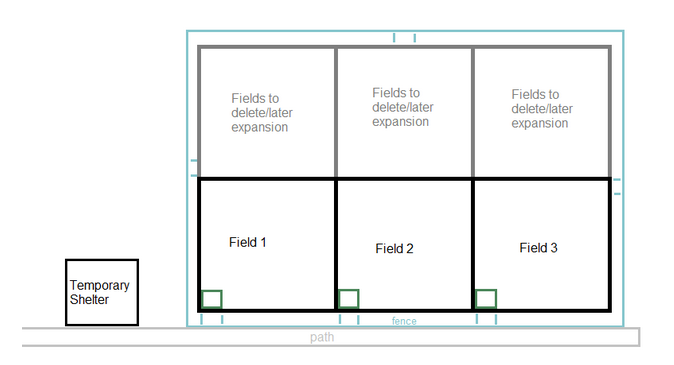
Keep groups of Fields 4 squares apart (not including fencing). Each field does different crops, of the same rotation plan, at a time. This prevents spreading, while providing efficient crop yields.
In high Environment Fertility Factor maps (80%+, Lowland Lakes) you will be able to grow Peas, Turnips, and Flax on the same Field group. These crops balance high vegetable production (some inflated food stocks before the food spoils) Your fertility should be in a slight positive, but you can adapt by replacing a Peas or Turnip with more Clover if you want to raise the Fertility higher quickly. None of these crops have diseases that spread to the others, and it is more efficient to leave the Fields alone (rather than cancel crops) if one gets a disease. The disease will be gone by the next time it grows those crops again, and can’t spread if they’re not growing the relevant crops.
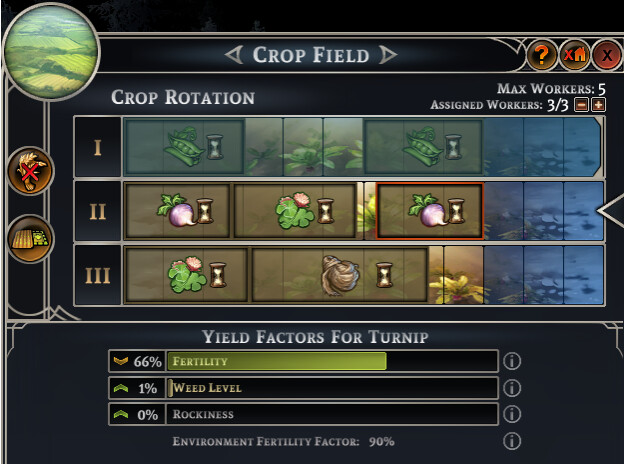
Your low Environment Fertility (Arid Highlands) will separate vegetables from Flax, and instead grow one lot of Beans in place of the Peas, and one lot of Carrots instead of Turnips (fitting Clover where possible), then full Clover in the 3rd year. This will very slowly raise Fertility.
Wheat field groups have 2 crops that don’t spread to each other; Wheat and Buckwheat.
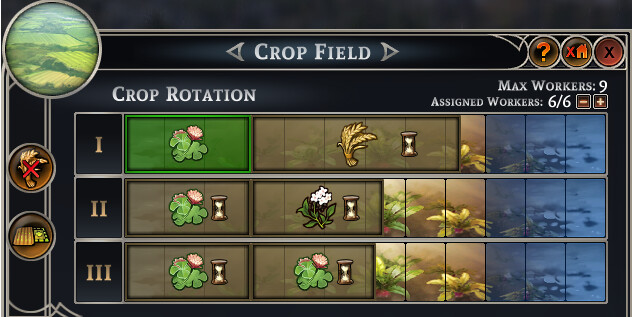
This setup will produce the most Wheat possible in high Environment Fertility Factor while being slightly Fertility-positive.
Unless something has been changed, Hay has no Disease interaction, so growing Hay should be a matter of adapting the other Field groups based on your needs. When starting out with Wheat you shouldn’t have much use for higher amounts, so it can replace Buckwheat. Or if you’re putting down your second lot of Vegetable fields and still have lots of Flax, Hay can replace that. (This is also assuming High Fertility Factor)
Now what I would like to see from this is people figuring out higher yield, non-spreading rotations, better plans for Arid Highlands, and also rotations that involve Greens for those who just think Greens are neat (and your Vanquisher games aren’t going too difficult).
